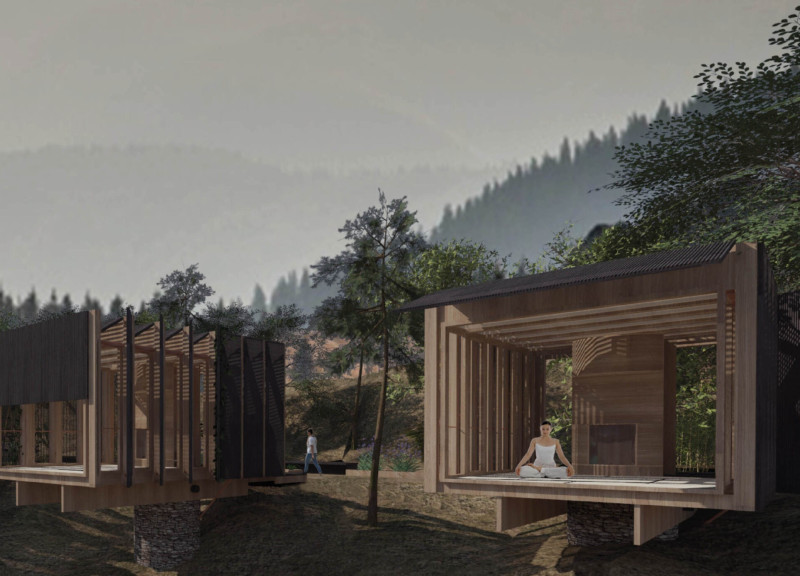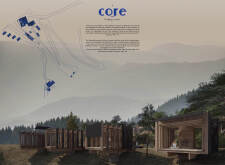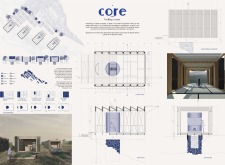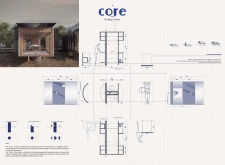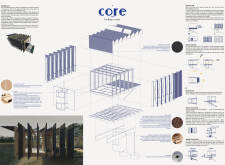5 key facts about this project
The design is located in a calm setting, aiming to provide a space for healing and reflection. It blends with its surroundings while focusing on comfort and practicality. The concept draws on ideas from Taoism and Zen, creating an environment that encourages peace and well-being through thoughtful spatial arrangement and a strong connection with nature.
Core Concept
Central to the design is the Core, or Energy and Movement Center, which serves both structural and functional purposes. This element organizes essential services and spaces, allowing users to move comfortably between treatment and relaxation areas. By focusing on stability and balance, the Core plays an important role in the overall layout, facilitating a smooth flow for various activities.
Roji and Healing Spaces
The roji functions as a vital promenade leading visitors from the outside world into the retreat’s inner spaces. This thoughtfully designed pathway introduces visitors to a variety of culinary and therapeutic plants, enriching their sensory experience and promoting a holistic view of well-being. The tranquil feeling created by the roji prepares individuals for a more intimate experience in the treatment room, where the atmosphere encourages introspection and healing.
Materiality and Structure
Materials used in the design reflect a commitment to sustainability and connection to the environment. Eucalyptus wood is chosen for the core, providing warmth and durability, while tatami mats made of compressed rice straw enhance sound quality and temperature control. The building features large wooden beams that use leverage principles, maximizing space while minimizing waste. Charred pine wood is also included in external elements for added strength and visual interest.
Sustainable Practices
Attention to sustainable practices is evident throughout the project. Adjustable wooden shutters offer effective control of sunlight, while cross-ventilation methods improve indoor air quality. Water conservation systems allow for the collection and reuse of rainwater and gray water. This careful planning supports ecological responsibility and aligns with the design's goal of creating a self-sufficient environment.
In the treatment room, tatami mats connect the interior to traditional practices. They help establish a calm atmosphere that enhances the healing process, creating a setting where visitors can find comfort and relaxation.


